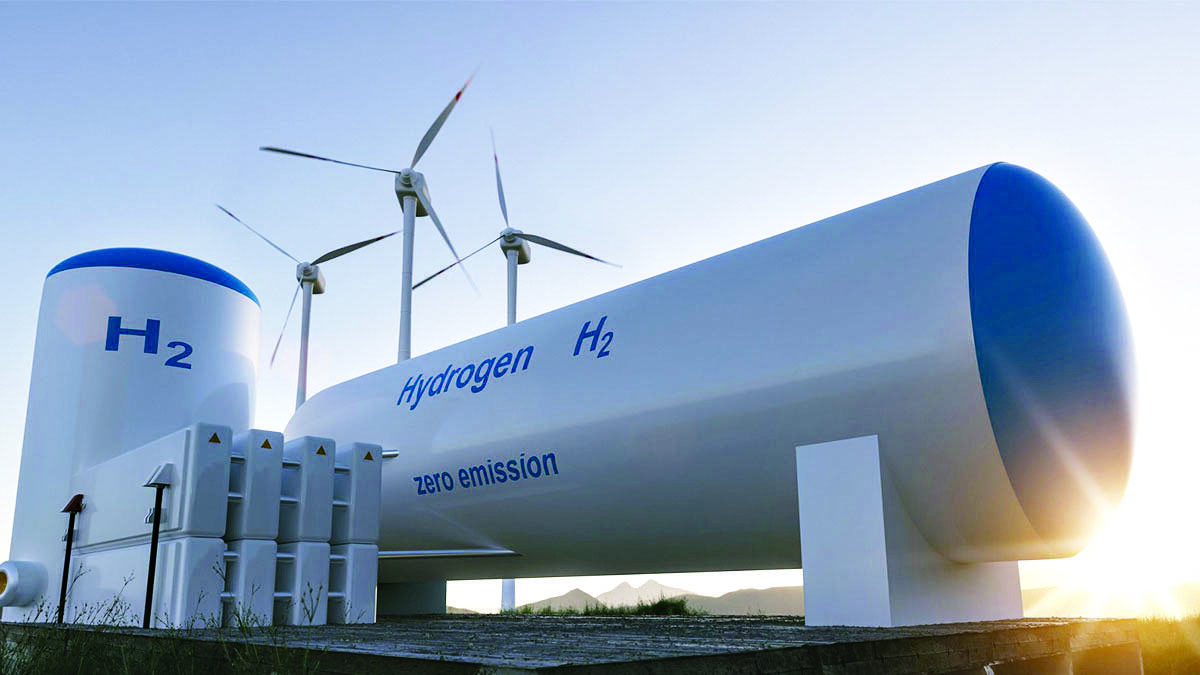'Govt targets green hydrogen production at 5 MT by 2030'

New Delhi: The government on Thursday allowed free inter-state wheeling of renewable energy used in the production of green hydrogen and ammonia as it seeks to boost usage of the carbon-free fuel and make India an export hub.
Unveiling the first part of the much-awaited National Hydrogen Policy, Power and New and Renewable Energy Minister Raj Kumar Singh said the government is targeting production of 5 million tonnes (MT) of green hydrogen by 2030.
Oil refineries to steel plants require hydrogen to produce finished products. This hydrogen currently is generated using fossil fuels such as natural gas or naphtha. While hydrogen per se is carbon-free, the use of fossil fuels results in carbon emissions.
Green hydrogen — also referred to as 'clean hydrogen' — is produced by using electricity from renewable energy sources, such as solar or wind power, to split water into two hydrogen atoms and one oxygen atom through a process called electrolysis. The hydrogen thus produced is used in the manufacturing process and oxygen is released into the atmosphere or bottled and sold to hospitals and industries that need it.
A similar process also helps produce green ammonia.
"Hydrogen and ammonia are envisaged to be the future fuels to replace fossil fuels. Production of these fuels by using power from renewable energy, termed as green hydrogen and green ammonia, is one of the major requirements towards environmentally sustainable energy security of the nation," Singh said. The government, he said, is taking various measures to facilitate the transition from fossil fuel/fossil fuel-based feedstocks to green hydrogen/ green ammonia.
In the second phase of the policy, the government would mandate the usage of green hydrogen and green ammonia by plants in a phased manner.
Under the policy, companies will have the liberty to set up the capacity to generate electricity from renewable sources anywhere in the country by themselves or through a developer. They could also buy such power from the exchange. This electricity will be allowed to be wheeled, free of cost through open access of the transmission grid, to the plant where hydrogen is to be produced. The government will also allow the green hydrogen/ammonia manufacturer to bank unconsumed renewable power, for up to 30 days, with the distribution company and take it back when required.
The policy provides for a "waiver of inter-state transmission charges for a period of 25 years for manufacturers of green hydrogen and green ammonia for the projects commissioned before June 30, 2025."
The manufacturers of green hydrogen/ammonia and the renewable energy plant shall be given connectivity to the grid on a priority basis to avoid any procedural delays, Singh said, adding that to ensure ease of doing business, a single portal for carrying out all the activities, including statutory clearances in a time-bound manner, will be set. Manufacturers of green hydrogen/green ammonia would also be allowed to set up bunkers near ports for storage of green ammonia for export or use by shipping.
"The implementation of this policy will provide clean fuel to the common people of the country. This will reduce dependence on fossil fuels and also reduce crude oil imports. The objective also is for our country to emerge as an export hub for green hydrogen and green ammonia," he said. The fuels can be a game-changer for the energy security of India, which imports 85 per cent of its oil and 53 per cent of gas requirements.
The policy will aid in India's energy transition and achieving the target of becoming carbon neutral by 2070. "Green hydrogen and green ammonia are the new fuels which will power the future world, and we aim to be at the forefront of this future world," Singh said.
Singh also said that he would meet major industries shortly to explain about the new policy.
"The demand for green hydrogen is now increasing around the world. We aim to be a world leader in manufacturing of green hydrogen. This is something which will transform our country, our country will now emerge as an exporter of energy as compared to the present importer of energy.



